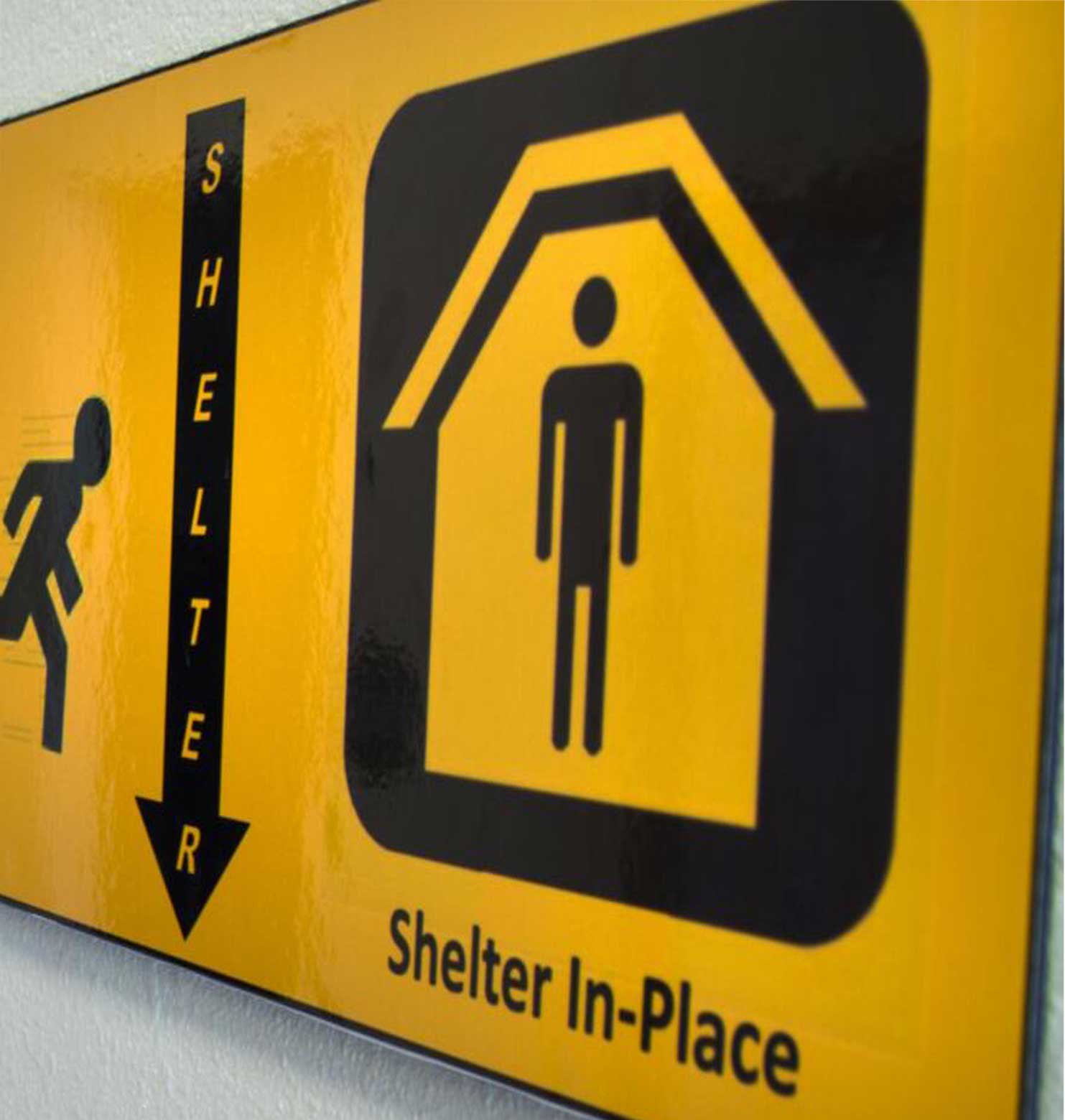"Shelter-in-place" means seeking immediate shelter inside a building. This action may be taken during a natural disaster or extreme weather as well as a release of chemical, biological or radiological contaminants, into the environment in such a quantity and/or proximity to a location that it is safer to remain indoors rather than to evacuate. For shelter-in-place due to violence in progress, see the tab “Crime in Progress” or “Active Shooter.”
Preparing to Stay or Go
Use available information to assess the situation and determine if there is immediate danger. In any emergency, local authorities may or may not immediately be able to provide information on what is happening and what you should do. If you see large amounts of debris in the air, or if local authorities say the air quality may have adverse health effects, you may want to "shelter-in-place".
Shelter-in-Place Procedures
- Select an interior room within your facility, and take refuge there.
- Close and seal all doors, windows, and air vents as best as possible to prevent outside air from coming in.
- Isolate yourself as much as possible from the external environment.
- Monitor all available communications.
- If you are specifically told to evacuate or seek medical treatment, do so immediately.
